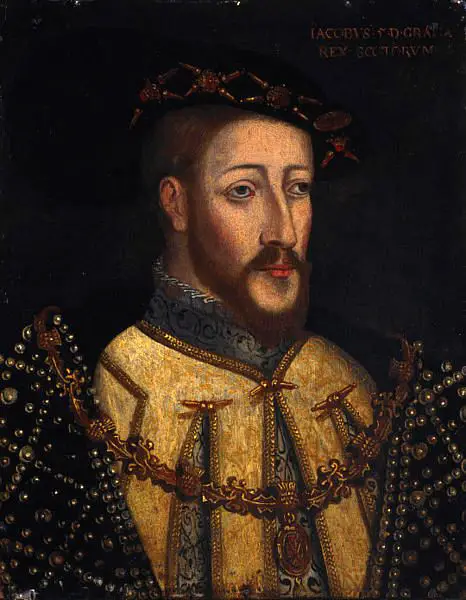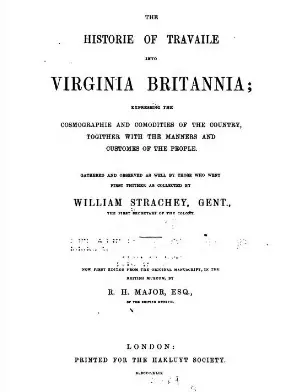On this day in history, 6th April 1590, Elizabeth I's principal secretary, Sir Francis Walsingham, died at around the age of fifty-eight. Although he had served the queen for many years, he died in debt, as he had underwritten the debts of Sir Philip Sidney, his son-in-law.
Walsingham was an incredibly important man during Elizabeth I's reign, being a statesman, private secretary, adviser, diplomat and spymaster, and he probably saved the queen's life many times by uncovering various plots against her. Elizabeth called him her “Moor”.
He was born c.1532 (some say 1530) at Scadbury Park, Chislehurst, Kent, and was the son of William Walsingham and Joyce Denny. His father died when he was an infant, and his mother married Sir John Carey, a relation of Mary Boleyn, Anne Boleyn's sister. Walsingham's father was Common Sergeant of London, his mother was related to Sir Anthony Denny, a member of Henry VIII's Privy Council, and his uncle, Sir Edmund, was Lieutenant of the Tower of London.
Walsingham studied at King's College, Cambridge, and then, in 1550, he went abroad to continue his education. In 1552, he returned to England and enrolled at Gray's Inn (The Honourable Society of Gray’s Inn, an Inn of Court). When Mary I came to the throne, Walsingham, who was a staunch Protestant, fled abroad and continued his law studies at the University of Padua, and then lived in Switzerland between 1556 and 1558.
Elizabeth I's accession to the throne in 1558 meant that Walsingham could return to England. In 1559, his friendship with Sir William Cecil helped him to become a member of Parliament for Banbury, and then for Lyme Regis in 1563. In 1569, Walsingham was asked by William Cecil to investigate the Ridolfi Plot, and in 1570 Elizabeth I asked Walsingham to help the Huguenots in France negotiate with Charles IX, because he had built up a good relationship with them. In the same year, he became the ambassador to France, and it was to his house that Protestant refugees fled during the time of the St Bartholomew's Massacre and other troubles.
Walsingham returned to England in 1573, and was rewarded for his hard work by being made the queen's principal secretary, a position he shared with Sir Thomas Smith until 1576 when Smith retired. In 1577, he was rewarded again with a knighthood and was trusted with special embassies in 1578 and 1581 to the Dutch and French courts. In the late 1570s, Walsingham was known for his opposition to the plans to encourage Elizabeth I to marry the Duke of Anjou, and for his encouragement of military intervention in the Low Countries. In the mid to late 1580s, he and William Cecil worked on preparing England for war with Spain.
Although Walsingham was an important diplomat and the queen's principal secretary for a time, he is best known as Elizabeth I's spymaster, and for his successful work uncovering plots against the Queen. He worked on uncovering the Ridolfi Plot, and put a stop to the Throckmorton (Throgmorton) and Babington Plots. It was the Babington Plot which convinced Elizabeth I of the need to execute Mary, Queen of Scots, and Walsingham was one of the advisers who encouraged her to take this course of action.
(Taken from On This Day in Tudor History by Claire Ridgway)
Further Reading
- The Queen's Agent: Francis Walsingham at the Court of Elizabeth I by John Cooper
- Elizabeth's Spy Master : Francis Walsingham and the secret war that saved England by Robert Hutchinson
- Sir Francis Walsingham: A Courtier in an Age of Terror by Derek Wilson
- The Watchers: A Secret History of the Reign of Elizabeth I by Stephen Alford
- Her Majesty's Spymaster: Elizabeth I, Sir Francis Walsingham, and the Birth of Modern Espionage by Stephen Budiansky
- If you subscribe to Oxford Dictionary of National Biography then you can read Walsingham's biography there at http://www.oxforddnb.com/view/article/28624. It has a very long and detailed list of sources.





I know there is more to Walsingham and he was skilled in his code breaking and cunningly out manoeuvring the Queens enemies, real and imagined, at home and abroad, but I can’t help but think of him as the notorious henchman determined to trap Mary, Queen of Scots. Well yes, Francis Walsingham obviously wanted to prove Mary was plotting against Elizabeth, but he had a hard time doing so. It was his primary duty to keep his mistress, Queen Elizabeth, to whom he was devoted. Francis W also had some skeletons in his closset in the form of a brother or cousin who had been up to no good and another relative who was a devoted Catholic. He had already tried to absolutely prove Mary’s involvement in earlier conspiracies but had recently failed rather miserably. Mary had always denied everything, but now another group of young men plotted to release Mary and place her on the throne. These young men contacted Mary who was being held in the Midlands at Chartley in Staffordshire. They used coded letters smuggled in barrels, in the cork under the rim, a normal delivery system as barrels were the boxes of their day, which Walsingham removed, decoded and sent on. Mary was extremely careful in her response, but she was desperate to escape. Sir Amys Paulet was a strict po faced Puritan who was extremely restrictive of Mary and subjected her ladies to body searches. He was mildly respectful, but nothing more. Mary complained about often. One redeeming quality he had was, unlike Walsingham, Paulet had a sense of decency, of honour. When it was suggested that Mary may be dispatched by poison Paulet absolutely refused. Mary wanted her freedom but fell short of consenting the death of Elizabeth. Walsingham set up this unique form of communication, the whole scam was his trap. Mary got a message that she would be freed on a ride one morning and took advantage of this. Several miles away she saw some gentlemen riding towards her and thought it was her deliverers. They had instead come to arrest her. While she was out her rooms were ransacked. It has always been a matter of debate as to what was found, but Walsingham used some of these letters in evidence. Mary was treated like a common criminal, shown no respect and her imprisonment hell until her removal to Fotheringhay for trial and execution. Walsingham has also been condemned in some modern studies of forging the evidence and amending Mary’s code. In other words she was framed. The evidence of this is open to interpretation. However, if you had failed in your duty wouldn’t you set up your target? I believe Francis Walsingham planted and manipulated evidence in the so called Babington plot to implicate Mary Queen of Scots as part of this and force Elizabeth I into putting her cousin on the trial. He also had difficulty in the trial, Mary put up a good fight. In the end Walsingham and his paid turncoats were able to get Elizabeth to sign the warrant, although she denied it. Mary was executed dressed as a martyr on 8th February 1587. Walsingham continued his war on innocent English Catholics and some not so innocent foreigners until his death in 1597.
1590, sorry.